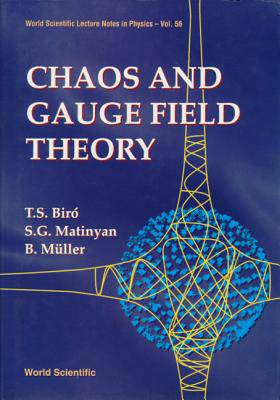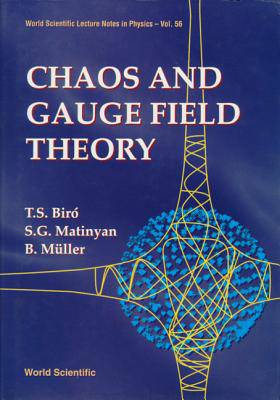
- Afhalen na 1 uur in een winkel met voorraad
- Gratis thuislevering in België vanaf € 30
- Ruim aanbod met 7 miljoen producten
- Afhalen na 1 uur in een winkel met voorraad
- Gratis thuislevering in België vanaf € 30
- Ruim aanbod met 7 miljoen producten
Zoeken
Omschrijving
This book introduces a rapidly growing new research area -- the study of dynamical properties of elementary fields. The methods used in this field range from algebraic topology to parallel computer programming. The main aim of this research is to understand the behavior of elementary particles and fields under extreme circumstances, first of all at high temperature and energy density generated in the largest accelerators of the world and supposed to be present in the early evolution of our Universe shortly after the Big Bang.In particular, chaos is rediscovered in a new appearance in these studies: in gauge theories the well-known divergence of initially adjacent phase space trajectories leads over into a quasi-thermal distribution of energy with a saturated average distance of different field configurations. This particular behavior is due to the compactness of the gauge group.Generally this book is divided into two main parts: the first part mainly deals with the "classical" discovery of chaos in gauge field theory while the second part presents methods and research achievements in recent years. One chapter is devoted entirely to the presentation and discussion of computational problems. The major theme, returning again and again throughout the book, is of course the phenomenon with a thousand faces -- chaos itself.This book is intended to be a research book which introduces the reader to a new research field, presenting the basic new ideas in detail but just briefly touching on the problems of other related fields, like perturbative or lattice gauge theory, or dissipative chaos. The terminology of these related fields are, however, used.Exercises are also included in this book. They deepen the reader's understanding of special issues and at the same time offer more information on related problems. For the convenience of the fast reader, solutions are presented right after the problems.
Specificaties
Betrokkenen
- Auteur(s):
- Uitgeverij:
Inhoud
- Aantal bladzijden:
- 300
- Taal:
- Engels
- Reeks:
- Reeksnummer:
- nr. 56
Eigenschappen
- Productcode (EAN):
- 9789810220792
- Verschijningsdatum:
- 1/03/1995
- Uitvoering:
- Hardcover
- Formaat:
- Genaaid
- Afmetingen:
- 162 mm x 217 mm
- Gewicht:
- 730 g

Alleen bij Standaard Boekhandel
+ 285 punten op je klantenkaart van Standaard Boekhandel
Beoordelingen
We publiceren alleen reviews die voldoen aan de voorwaarden voor reviews. Bekijk onze voorwaarden voor reviews.











